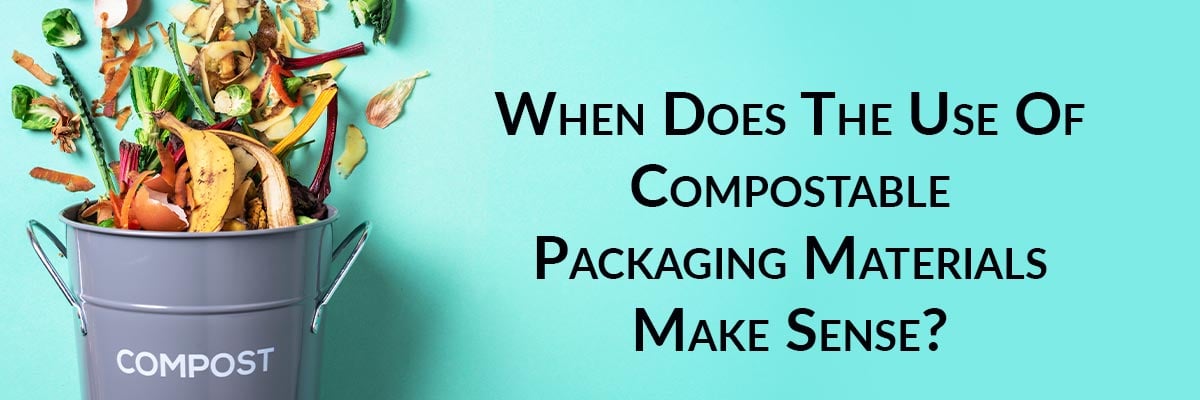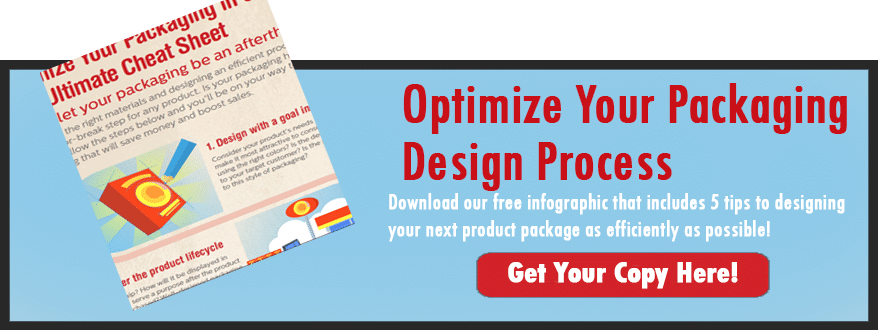When Does The Use Of Compostable Packaging Materials Make Sense?
Various trends in the realm of packaging are expected to be hot-button topics in the new year. One of these topics is sustainable, recyclable, and environmentally friendly packaging materials.
There has been a growing demand from consumers worldwide for companies to seriously consider the shift from single-use plastics to what many consider to be more environmentally friendly materials.
But, as many consumers are slowly finding out, what is actually "environmentally friendly" and what is not can often be confused. This is the result of various forms of green-washing and carefully crafted corporate marketing materials.
So, how do you know this article itself is not in fact a green-washing attempt? Well, for one thing, we are going to show you how compostable packaging materials can be properly implemented. We will show you how they can be earth-friendly alternatives while also providing other sustainable packaging options for those you who are unable compost properly. In the end, you can decide for yourself.
One of these future potential packaging materials is compostable items such as biodegradable shrink films, biodegradable flexible pouches, and various other types of bio-plastic materials, which are often made at least in part, from plants.
This article will help you identify when compostable packaging materials may make sense for you and those situations in which traditional packaging materials are the more environmentally-friendly choice.
Are Biodegradable Packaging Supplies Good For The Environment?
Biodegradable packaging materials, which are only just becoming available to the market in the past couple of years, are beginning to catch the imaginations of the environmentally-minded consumer.
However, the earth-friendly aspect of compostable packaging materials such as bio-films and other bio-based flexible packaging supplies is more complicated than it seems.
While seemingly kinder to mother earth, many of these materials must be disposed of properly for them to compost correctly. Failing to compost these materials in the manufacturers' ways can result in problems with the biodegrading process rendering the potential sustainability of these materials null and void.
When a compostable bio-based material is composted correctly in the ways instructed by the materials manufacturers, they will prove to be useful items for the environmental movement as a whole. That being said, the question remains, when does the use of compostable packaging materials make sense?
When Are Compostable Packaging Materials A Good Choice?
Bio-based compostable packaging materials may make sense for you if you are able to adequately educate your customer base on composting protocols in the home or offer a service to collect the items and send them to an industrial composting facility.
Outside of that, they are not likely a good fit if you genuinely want to choose the most earth-friendly packaging materials for your business.
Need Help Designing Your Packaging?
Other Environmentally-Friendly Packaging Materials Options
When it comes to other earth-friendly packaging materials, you have a few different options. There are some exciting ways to tackle this situation, from traditional plastic shrink films to the potential implementation of LOOP packaging protocols.
We have complied several different types of earth-friendly packaging options for your consideration. If you are unable to properly compost your materials at home, or if you do not have access to an industrial composting plan, these may be a better option for you.
Recyclable Packaging Materials
There is a wide variety of recyclable packaging materials. Materials such as corrugated cardboard, paperboard, plastic, glass, and metal are all recyclable materials.
Assuming that your customers properly clean and separate these materials before putting them in a single-stream recycling bin, they may be a good option for your business.
Of all the materials mentioned above, plastics are the most earth-friendly choice as they have the lowest carbon footprint of any of them. The heavier the packaging material, the more expensive they are to ship and the higher the carbon footprint. Heavier materials result in higher carbon emissions during shipping.
Flexible packaging plastics such as shrink film generally have the lowest carbon footprint of all of the most popular packaging materials currently available.
Flexible Packaging Materials
Many recyclable materials still end up in a landfill due to contamination during the single-stream recycling process. It would be wise to consider using packaging supplies made with less material, as they will take up less space in our landfills.
Materials such as shrink film, flexible pouches, and other flexible packaging supplies are a better choice compared to rigid packaging alternatives such as hard plastic containers, glass, metal, and cardboard.
LOOP
Loop is a complete paradigm shift from traditional packaging inspired by the old school approach of the milkman. From LOOP's website:
“Loop is a circular shopping platform that transforms the packaging of your everyday essentials from single-use disposable to durable, feature-packed designs. Not so long ago, the milkman delivered reusable bottles and later picked them up to be refilled. Loop is the milkman reimagined - honoring our past from a modern perspective.”
Rather than a milkman, you will find yourself interacting with your local UPS delivery driver who delivers products from some well-known brands (for example, Nestlé, PepsiCo, Mars Petcare).
Later, he would return to pick up a box of used packaging containers, which would then be returned to the vendor you purchased them from. The items would be sanitized, refilled, and returned to your location. Thus, a literal loop of reusable packaging is implemented.
How To Shift To Earth-Friendly Packaging
Regardless of which type of earth-friendly packaging you are interested in implementing, the journey begins with research. You can find a host of articles about the different types of recyclable, biodegradable, reusable, and other forms of sustainable packaging in our learning center.
Then again, if you want to move this process along faster, you may wish to speak with one of our in-house packaging experts. They will help you identify the best type of earth-friendly packaging materials and select a vendor.
Regardless of whether or not you choose to buy your materials from us, our consultants will be able to assist you on your quest to source packaging materials that have less of an impact on our planet earth.
About Nathan Dube
As the Digital Marketing Specialist at Industrial Packaging, I am honored to create content for such a phenomenal company and work with one of the greatest teams in the Packaging Industry. Whether creating a video, writing blog posts or generating other pieces of content and multimedia, I am always excited to help educate and inspire our prospects and clients to reach their highest potential in regards to their packaging processes and needs.




